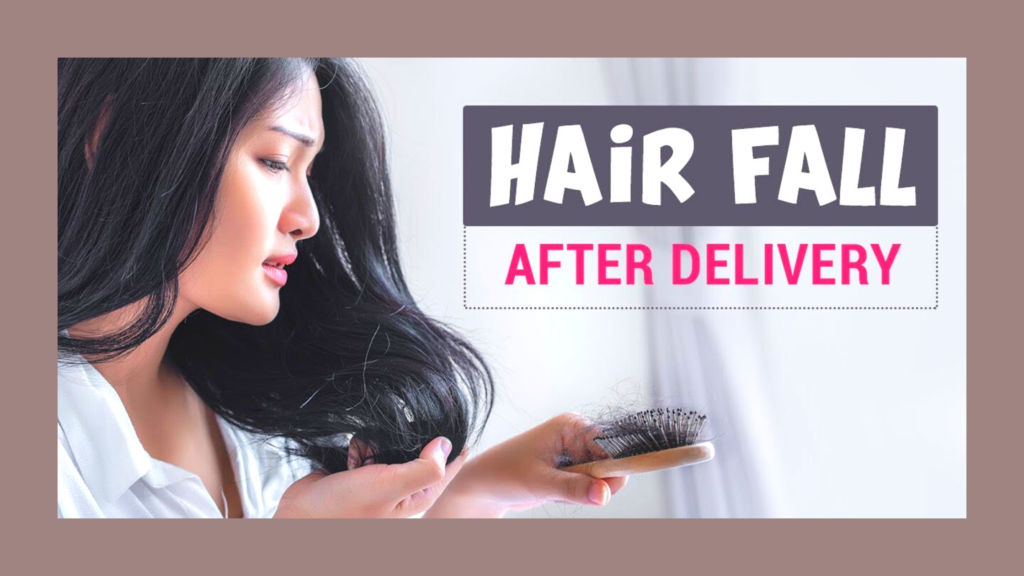Ladies typically appreciate great hair wellbeing during pregnancy. This is on the grounds that, regularly, 90% of our hair develops at a given point as expected while the other 10% is resting. After the resting stage, the hair tumbles off and is supplanted by new strands of hair. During pregnancy, most of the hair is in the resting stage, bringing about thicker hair. The pregnancy hair fall, to a degree, is a lot lesser contrasted with the outcome of baby blues. After pregnancy, the Estrogen levels boil down to typical, and the hair cycle emerges from the resting stage, prompting hair fall. This is known as ‘Telogen Effluvium‘ and for the most part endures for three to a half year after conveyance. Notwithstanding, certain outside components, for example, absence of rest and stress of dealing with an infant can aggravate it.
However, don’t stress, women! With some great consideration and persevering endeavors, we are certain you’ll get those lovely secures back no time.
What Causes Hair Fall After Delivery?
The impact is compounded by your expanded blood volume and dissemination, which likewise makes your hair drop out not exactly typical. So after your child shows up and your chemical levels drop, your hair compensates for some recent setbacks by dropping out in a lot greater clusters than it regularly does.

During pregnancy, your estrogen and progesterone levels take off, especially from the subsequent trimester. Estrogen, specifically, powerfully affects different frameworks in the body including the skin and sebaceous organs, and furthermore on the basic development example of hair. Numerous ladies notice enhancements in skin and hair quality during pregnancy and quickly developing, hydrated hair. The adjustments in hair can be ascribed to the manner in which estrogen impacts the particular example of development remarkable to hair.
There Are the Home Remedies to Reduce Hair Fall After Delivery
- Deal with your hair
At the point when your follicles are in the telogen stage (the resting period of the hair follicle), they are in their most delicate state and can be unstuck without any problem. To maintain a strategic distance from untimely shedding, be soft with your hair when brushing, washing, and drying, and evade tight haircuts that place an excess of footing on the follicles. A silk pillowcase can likewise assist with ensuring your hair isn’t pulled out in your rest. Being benevolent to your hair will guarantee your telogen hairs stay in the scalp as far as might be feasible.
- Keep a solid eating routine
While the hormonal changes that add to baby blues balding can be unavoidable, dietary changes and included requests for the body’s energy after birth can likewise meddle with the hair cycle. When the body is in supplement unevenness, it transports energy to fundamental organ frameworks, such as the mind, lungs, heart, liver, and away from superfluous capacities, such as developing hair. Such changes can compound or expand the time of postnatal balding. To stay away from this, ensure you eat a consistent eating regimen with many protein, verdant greens, and leafy foods.
- Get wholesome help
It’s not in every case simple for another family or developing family to plan great adjusted dinners or even eat on everyday occasions after the appearance of an infant. To assist your body with getting the supplements it needs, have a go at taking one of the numerous postnatal enhancements accessible these will supply the nutrients and minerals expected to limit changes to your hair. Continuously request counsel from your doctor before beginning any supplementation.
- Limit pressure
For example, stress chemicals can contrarily affect your hair cycle, intensifying the hormonal changes after birth. While it may not be challenging to unwind with an infant, you should be careful to take some loosening up break only for you. Attempt reflection or enjoy a customary back rub or spa day. Light exercise, for example, altered postnatal yoga, can likewise help decrease feelings of anxiety.
- Change your style
Numerous new mothers choose a more limited, simple to-oversee haircut. Not exclusively can more limited hair be styled to conceal more thin hair, yet more limited hair will likewise help when the new hair begins to fill in. All or the vast majority of the coat that sheds will develop back, yet the cycle requires some investment. New hairs will show up as fly-aways so that this hairdo will help the more current hairs mix with the excess hair, and they can develop out together.
Also Read: Best Heated Straightening Brush – Philips BHH880/10
Comments
Post a Comment